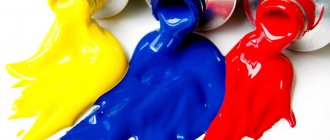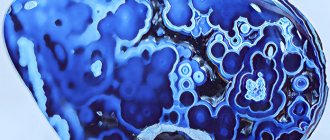Red color has a more active influence in human psychology than any other color. This impact is both positive and negative. It excites, motivates to action, gives strength and energy. And at the same time it causes aggression and irritation. Typically, red is the favorite color of those who strive for leadership positions. Who else likes red? How to use it correctly in life?
A little history
The color red in color psychology and its shades have always played an important role in people's lives. There is several evidence for this:
- The paintings on the rocks are often done in red.
- Some African tribes smear their bodies with red in their rituals, considering this color to be magical. The leader wears the same outfit.
- In ancient times, the color symbolized Mars, strength, masculinity, and belligerence.
- In Western Europe it is a symbol of power.
- In Ancient Egypt, red was considered sacred. Therefore, only people with authority could use it.
- In ancient times, red meant love.
- The Slavs had a wedding dress of exactly this color.
- In Christianity, red symbolizes the blood of Christ.
Particular importance is attached to color in Europe. Here he talks about power and strength.
Choice of stars
White outfits are often worn by movie and pop stars for the most special events. So, for the Oscars 2016 ceremony, Jessica Alba chose a simple white wrap dress. And Kate Beckinsale chose a straight silhouette outfit with a snow-white skirt and a bodice decorated with black sequins.
No woman has any reason to refuse to wear white clothes. You just need to choose the right style and skillfully combine colors.
Significance in psychology
So, red color in psychology is strength, energy, sensuality, activity, aggression and sexuality. It motivates a person to action, excites. But at the same time it reminds us of blood.
At different times, color was given different meanings. For some, it symbolized love. For others, he spoke of war and hostility. It turns out that this spectrum conveys all emotions, from love to hatred.
Positive properties of the color red in psychology:
- perseverance;
- persistence;
- the ability to defend one’s opinion and position;
- desire to be a leader;
- dynamism.
The disadvantages include:
- cruelty;
- lust;
- stubborn character;
- intolerance;
- tendency to violence;
- destruction.
In addition to the main red color, its shades are also important in psychology. There are a number of examples:
- Burgundy. It is a combination of red and brown. Speaks of conservatism and self-confidence. People who like this shade are stubborn, assertive, but at the same time calm. They have no temper or aggression. An excess of burgundy is always heaviness and oppression.
- Scarlet color. Stronger than red in sensuality, sexuality, emotionality. It gives a person energy, but at the same time makes him act thoughtlessly and impulsively. Symbolizes carelessness.
- Crimson means sincerity. The person who loves him can be trusted. He charges with optimism and confidently moves towards achieving his goals. But at the same time he is very unpredictable.
- Fiery red. Gives people willpower, helps them cope with life's difficulties and trials. But sometimes all this leads to emotional exhaustion.
- Pink. This is purity, love, youth. Those who prefer this shade are vulnerable, touchy people. However, they quickly forgive and forget about insults.
- Dark red. Quite an interesting shade, meaning condescension, which borders on cruelty and even cynicism.
Those who love red in clothing, interior design, and accessories are natural leaders. It is difficult to piss off such people; they do not react to criticism and comments, but confidently move towards their goals. Achieving them is a common occurrence for them.
For men
What does the color red mean in the psychology of men? It is associated with sensuality and sexuality. It’s not for nothing that many representatives of the stronger sex prefer girls in red dresses. They are ready to do anything for them. But at the same time, they are not aware of the effect of color on their subconscious and often deny it.
Red can be called a masculine color. It denotes the raw energy inherent in confident, stubborn individuals. They persistently pursue their goals, but at the same time sometimes show cruelty.
For women
Women who love the color red are strong people who value their freedom and personal boundaries. Their actions are guided solely by their own desires and interests. And they want others to take them into account as well.
Despite such rigidity of character, these representatives of the fair sex are passionate, soft, and loving. They love life, enjoy every pleasant moment, try to live in such a way as not to miss a minute.
For children
According to psychology, if a child draws in red, there is nothing wrong with it. In the first years of life, he often chooses bright colors, such as pink or yellow. And only later does he pay attention to green, blue, etc. Often preferences depend on gender.
Children who highlight the color red among others are open and active. They will not adhere to generally accepted rules, but will establish their own. They also prefer to act against their parents' words. That is why their upbringing is often associated with difficulties.
Psychologists recommend not decorating children's playrooms in red. Its excess has a bad effect on the immature psyche.
Makeup and jewelry
The white color of clothing is very demanding on the quality of makeup. If your skin is problematic, then it is better not to wear snow-white blouses or use colored scarves in order to “distance” the color from the face.
If there are no skin problems, you still need to monitor the quality of your makeup. Only perfect skin looks good with white. But its shade is unimportant. White suits both fair-skinned and dark-skinned girls.
Jewelry for white clothes can be chosen from white or yellow metal, with or without stones. When creating summer looks, feel free to use bright jewelry.
Where is it used?
Red color is often found in clothing and, for example, in the interior of residential premises.
Cloth
According to color psychology, the color red in clothing speaks of a person’s desire to attract attention and be visible. A person’s character clearly shows courage, determination, fortitude and a desire to occupy leadership positions.
Red clothing indicates optimism, passion, and emotionality. However, it can also create a negative impression. Therefore, it is not recommended to wear such things to an interview with a potential employer.
Interior
How to correctly use red in interior design? There are several recommendations:
- An excess of red provokes attacks of aggression. Therefore, it is better to avoid using large objects and elements of this color. Small details, on the contrary, will create a feeling of comfort.
- Scarlet color is contraindicated for people who suffer from high or low blood pressure.
- The right combination of shades will help make the room a place where you can relax and recharge with vital energy.
- Red is associated with solemnity. Therefore, it is recommended to use it when decorating rooms for various celebrations.
You should not use shades of the red spectrum in the bedroom, nursery or bathroom. These rooms should provide an opportunity to relax and calm down, not perk up.
Properties
This is a neutral shade. When looking at him, no thoughts or emotions appear. He can easily bring an individual to his senses, collect his thoughts and help him calm down.
It can also fill you with energy. If you feel tired or overworked, then it is advisable to rest in a room with a similar spectrum. It will give you slight alienation and harmony.
But you shouldn’t abuse this either, since it also has negative sides. If you look at the whiteness for a long time, a state of loneliness, melancholy and longing sets in.
I do not recommend being in a room where only this range is present. You should mix it with other colors, for example, pastels.
Combination with other colors
What does red mean in combination with other shades?
- Gray - impulsiveness, rash actions, secrecy, often irresponsibility.
- Blue - fullness of emotions, unification with other people, the ability to interact with other people. Harmony in the sexual sphere.
- Green - purposefulness, initiative.
- Orange - harshness, irritation.
- Yellow - learning something new, gaining knowledge. Warmth, joy, active desire to interact with the outside world.
- Black - excessive drama in character, exaggerated desires, danger.
- Violet - an acute reaction to what is happening around, sensitivity to external stimuli.
In combination with brown, red denotes sensual satisfaction and self-indulgence.
Who loves red
People who prefer the red spectrum in everything have the following character traits:
- Desire to control others.
- Selfishness, stubbornness, cruelty.
- Love of adventure, desire for new experiences.
- Optimism.
- Sociability, originality, creativity, determination.
- Irritability, short temper.
- Power, the desire to keep everything under control.
- Energy, active life position.
Red appeals to women who want to dominate in relationships. They are impulsive and often show aggression.
Those who do not like this color are in most cases not confident in themselves. Such people prefer to be alone; they are afraid of quarrels and conflict situations.
If a person used to like the color red, but now doesn’t, we can talk about moral and physical exhaustion.
How does it affect the psyche?
All shades of the red spectrum have a stimulating effect on humans. Moreover, this affects both the subconscious and mood.
This color also provides a surge of vital energy. But not for long. The effect will quickly disappear, leaving room for a feeling of fatigue. To achieve long-term results, it is better to choose calm, warm tones.
Red color is irritating. In this state, people are capable of rash actions. But sometimes this leads to them doing what they have long wanted to do, but could not decide. However, it is worth remembering that using this method can cause uncontrollable outbursts of anger.
An excess of red provokes the development of anxiety. And if a person has a sensitive psyche, then panic attacks.
What does shortage lead to?
If we talk about the emotional state, then the lack of shades of the red spectrum leads to neuroses and headaches.
Shades of white
It would seem that white color cannot have shades, because it, like black, is universal. But if you approach this issue from the other side, then here too there is room for your imagination to run wild. In fact, all shades of white are highly whitened tones of other colors. The human eye distinguishes them perfectly, unlike shades of black, which seem to merge.
Porcelain
Slightly greyish, glossy and soft shade.
Frosty
Very light tone with a hint of ice blue.
Snow
This shade is even lighter, so the difference is barely noticeable to the eye.
Ivory
Yellow-white, very lightened tone with a radiant effect.
Milk or cream
White with a soft beige tint.
Opal
Matte white color.
Lunar
It is lighter than ivory tone, bright and shiny, but with a yellow tint.
Coconut
White matte tone.
Alabaster
Soft shade with a hint of gray.
Pearl white
Slightly grayish white color with a matte sheen.
Sea foam
This shade has a beige undertone but is lighter than milk.
Flour
White-grayish, matte tone.











